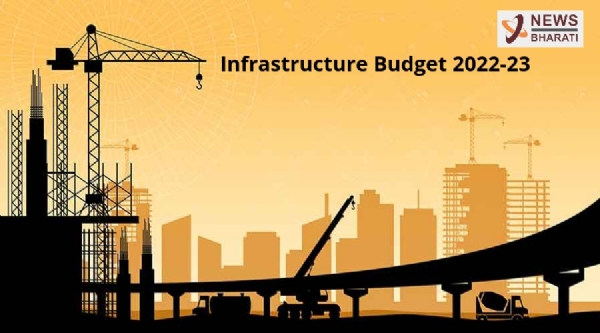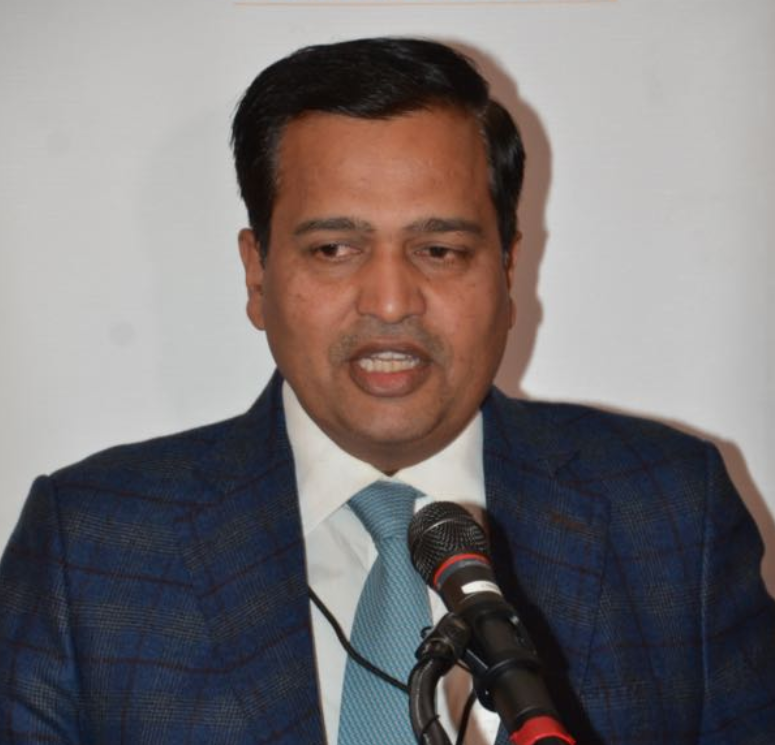Budget 2022-23 – For Infrastructure Sector Smile Continues, Hopefully:
The infrastructure sector expects Budget 2022-23 continues government’s focus on Infrastructure and as suggested by Rakesh Mohan committee addresses Sustaining spending on physical infrastructure, Monetize income-earning infrastructure assets, Developing robust and dynamic debt market for infrastructure funding and Special incentives for use of modern technology.
Total Views |
The Union Budget is always awaited with great excitement by Business Leaders, Policy researchers, economic experts and general people. 2022 is not different or to say this year there is much more excitement in anticipation to set the growth path for the coming year and understand the areas of focus that Government intends by higher budgetary allocation. The COVID pandemic has a significant impact on the India’s economy and everyone awaits Governments road map on various policy matters.
In 2021-22 government focused on sectors such as healthcare, MSMEs, and infrastructure to revive growth after the two-month countrywide lockdown imposed because of the Covid-19. However, Government made all efforts through Rs. 20-lakh crore Aatmanirbhar package to reverse the slide in economy and bring growth back on the upward trajectory. This continued in last two years.

Government has taken various initiatives like Production Linked Incentive Schemes for 13 key sectors with an expected outlay of INR 1.97 Lakh Crores to support and strengthen manufacturing and the PM GatiShakti National Master Plan (NMP) for better coordination among ministries and faster pace of infrastructure development. These steps are very important and shall go a long way in bringing back on growth track.
Though upward inflation, lag in demands in few sectors, not so encouraging numbers on new employment front and threat of Omicron globally paints a gloomy picture. But with the success of unprecedented vaccinations of more than 150 crore doses, the mood is upbeat in tackling vulnerable populations from impact of a third wave and its impact on business and economy. In the upcoming Budget Hon’ble Finance Minister shall have to do a huge balancing act. While addressing the needs of the industry, she will also have to chart a path for sustainable growth for next few years to come.
With inflation trending upwards, unemployment on the rise, demand lagging in some sectors, and the threat of the Omicron variant on the rise across the world, In this document, we analyze the various trends that would impact the direction, the government would have to take with the upcoming budget. Further, we dive deeper into various sectors highlighting their major challenges and expectations to address them, from the upcoming Budget.
Infrastructure Sector – The Growth Driver
Infrastructure sector is a key driver for the Indian economy. The sector is highly responsible for propelling India’s overall development and enjoys intense focus from Government for initiating policies that would ensure time-bound creation of world class infrastructure in the country. Infrastructure sector includes power, bridges, dams, roads, and urban infrastructure development.
Over the past 7 years, infrastructure in India has expanded at rapid pace significantly bringing change in the lives of citizens and boosting the local economy. While the infrastructure construction record of MODI government has been undisputed, the government shall have to ensure this year too budget gives impetus to this pace of infrastructure development in the country.
Handholding and Funding
While there have been some signs of economy coming back on growth trajectory, it should be emphasized that as the threat of a third COVID-19 wave looms large, the economic recovery remains fragile. Therefore, in ascertaining that any recovery gains momentum, the upcoming Budget must frontload infrastructure investments.
This is particularly needed because the states contribute almost 40% of the total infrastructure investments in India. But due to pandemic-related disruptions, the states have high fiscal deficits and are hit with liquidity issues. Therefore, the Centre needs to shoulder more of the burden of raising funds to drive infrastructure investments and projects. But the infrastructure sector should be sanctioned on priority in the Budget because any delay will impact the possibility of a faster economic revival.
Industry associations have already recommended that public investments in agri infrastructure be increased while healthcare expenditure as a percentage of GDP should be raised to 2% for building hospitals, training institutions and suchlike across India.
Given the Centre’s focus on its Atmanirbhar Bharat mission, infrastructure development can be vital in moving steadily towards achieving these goals. The Centre will be better placed in raising funding investments for the National Infrastructure Pipeline (NIP), which may include both public and private sector funds. Projects worth Rs 44 lakh crore are already being implemented as part of the Rs 111 lakh crore NIP, with the latter amount slated to be spent by 2024-25.
Meanwhile, projects worth Rs 22 lakh crore (or 20% of NIP) are under varying development stages. But proper and timely implementation is indispensable if ambitious objectives are to be met. The NIP framework currently comprises 39% investment by the Centre, 40% by states and 21% from the private sector. Considering the present market conditions, any shortfall from either of the other partners may require that the Centre fill the deficit for NIP goals to remain on track.
Significantly, under NIP, among others, Rs 25 lakh crore has been allocated for the energy industry, Rs 20 lakh crore for highways, Rs 16 lakh crore for irrigation, rural agriculture and food processing, Rs 16 lakh crore each for Railways and mobility, respectively, and Rs 14 lakh crore on digital infrastructure.
Given the Government’s thrust on infrastructure spending to revive the economy, the FY2023 budgetary outlay remains crucial to complete the Government’s ambitious Bharatmala and allied programs in a timely manner. Budget is excepted proposed increase capital outlay by 25%-30%. With an increase in the budgetary allocation the pace of asset monetisation is also expected to get momentum. Markets are also expecting a clear funding roadmap for the ambitious NIP and asset monetisation pipeline for NMP is spelled out in budget. Much of the infrastructure financing in the country is currently supported by the banking sector. The availability of long-term infrastructure financing continues a challenge, given the problems faced by commercial banks of asset-liability mismatch and high share of stressed assets.
It is estimated that weak infrastructure imposes a huge cost on business to the tune of 3-4% annually. That means, an infrastructure thrust directly boosts GDP growth by around 3-4%. That is because infrastructure investment has a huge multiplier effect downstream. Finally, The infrastructure sector expects Budget 2022-23 continues government’s focus on Infrastructure and as suggested by Rakesh Mohan committee addresses Sustaining spending on physical infrastructure, Monetize income-earning infrastructure assets, Developing robust and dynamic debt market for infrastructure funding and Special incentives for use of modern technology. This shall almost guarantee growth that finance ministers expects this year.


